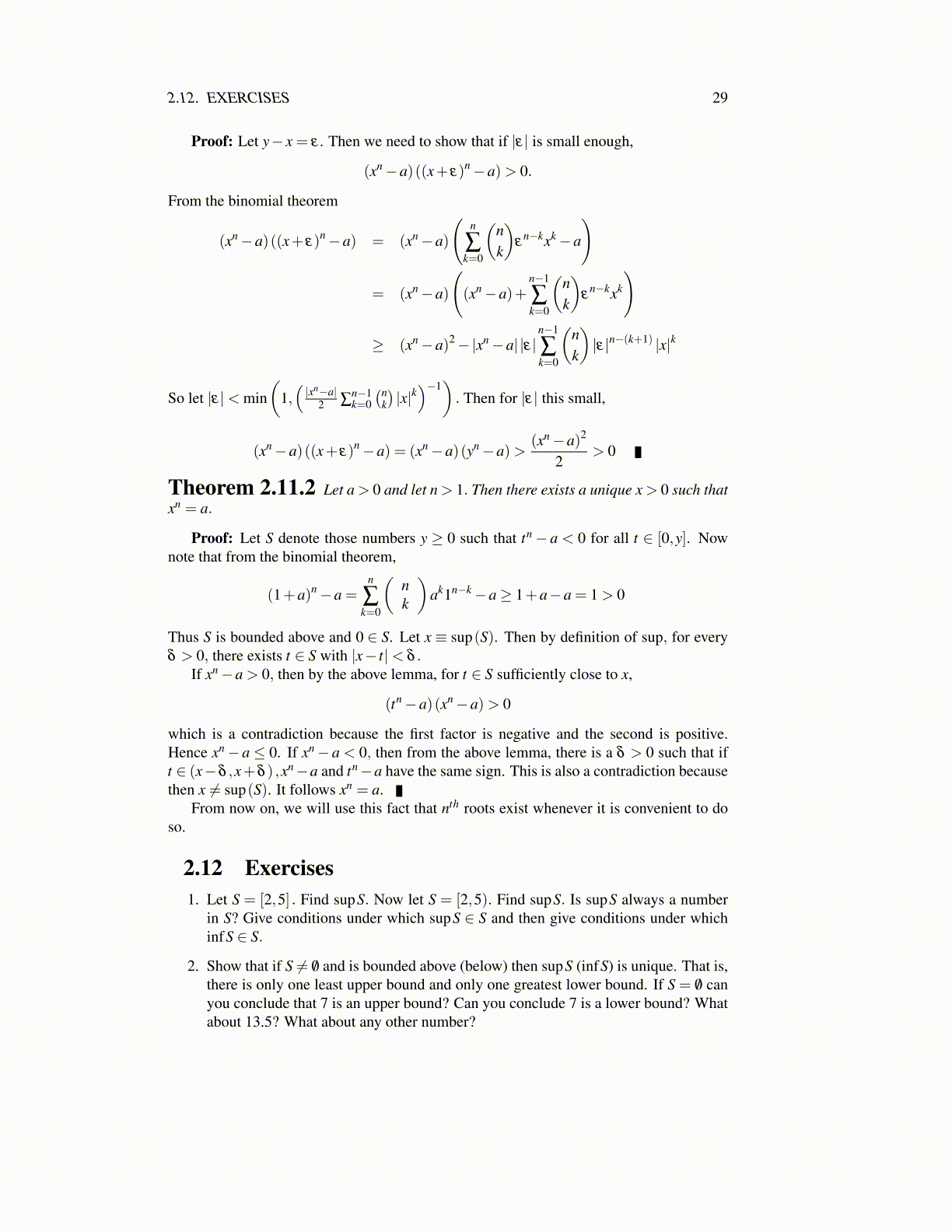
2.12. EXERCISES 29
Thus S is bounded above and 0 ∈ S. Let x ≡ sup(S). Then by definition of sup, for everyδ > 0, there exists t ∈ S with |x− t|< δ .
If xn−a > 0, then by the above lemma, for t ∈ S sufficiently close to x,
(tn−a)(xn−a)> 0
which is a contradiction because the first factor is negative and the second is positive.Hence xn−a ≤ 0. If xn−a < 0, then from the above lemma, there is a δ > 0 such that ift ∈ (x−δ ,x+δ ) ,xn−a and tn−a have the same sign. This is also a contradiction becausethen x ̸= sup(S). It follows xn = a.
From now on, we will use this fact that nth roots exist whenever it is convenient to doso.
2.12 Exercises1. Let S = [2,5] . Find supS. Now let S = [2,5). Find supS. Is supS always a number
in S? Give conditions under which supS ∈ S and then give conditions under whichinfS ∈ S.
2. Show that if S ̸= /0 and is bounded above (below) then supS (infS) is unique. That is,there is only one least upper bound and only one greatest lower bound. If S = /0 canyou conclude that 7 is an upper bound? Can you conclude 7 is a lower bound? Whatabout 13.5? What about any other number?
3. Let S be a set which is bounded above and let −S denote the set {−x : x ∈ S} . Howare inf(−S) and sup(S) related? Hint: Draw some pictures on a number line. Whatabout sup(−S) and infS where S is a set which is bounded below?
4. Which of the field axioms is being abused in the following argument that 0 = 2? Letx = y = 1. Then
0 = x2− y2 = (x− y)(x+ y)
and so 0 = (x− y)(x+ y) . Now divide both sides by x− y to obtain 0 = x+ y =1+1 = 2.
5. Give conditions under which equality holds in the triangle inequality.
6. Let k≤ n where k and n are natural numbers. P(n,k) , permutations of n things takenk at a time, is defined to be the number of different ways to form an ordered list of kof the numbers, {1,2, · · · ,n} . Show
P(n,k) = n · (n−1) · · ·(n− k+1) =n!
(n− k)!.
7. Using the preceding problem, show the number of ways of selecting a set of k thingsfrom a set of n things is
(nk
).
8. Prove the binomial theorem from Problem 7. Hint: When you take (x+ y)n , note thatthe result will be a sum of terms of the form, akxn−kyk and you need to determinewhat ak should be. Imagine writing (x+ y)n = (x+ y)(x+ y) · · ·(x+ y) where thereare n factors in the product. Now consider what happens when you multiply. Eachfactor contributes either an x or a y to a typical term.